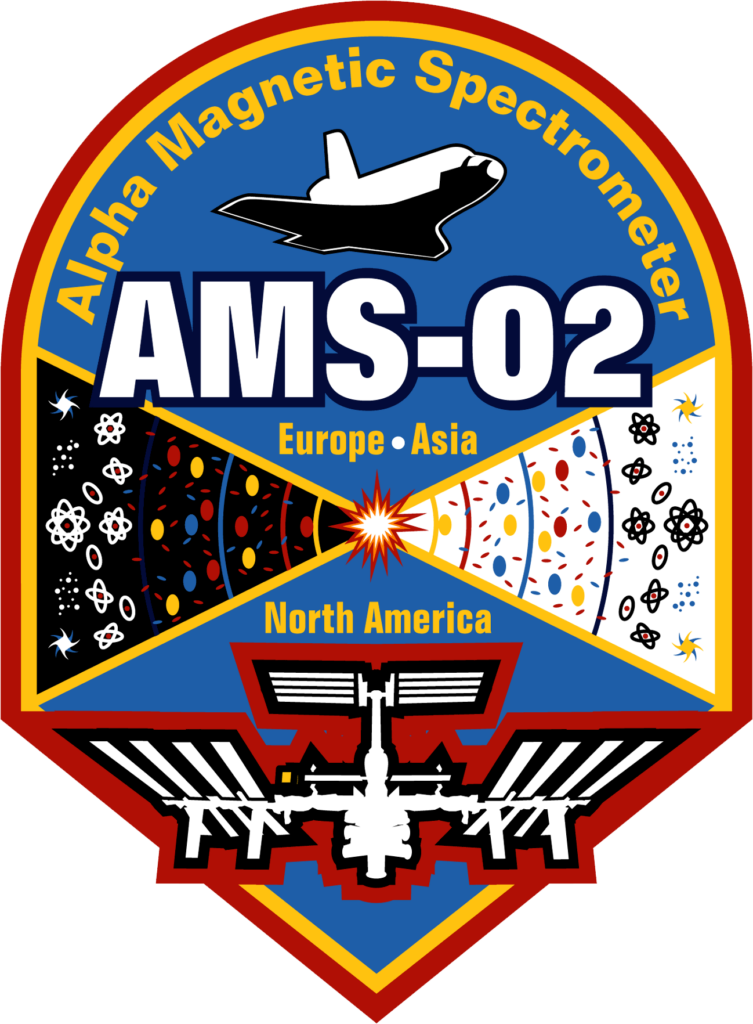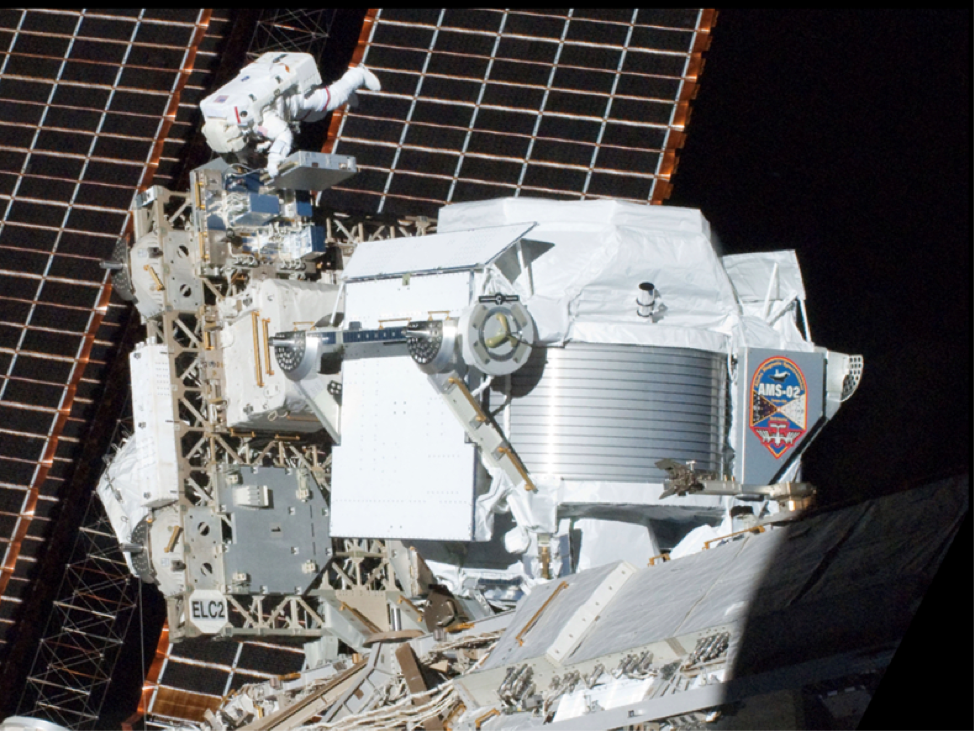
The Alpha Magnetic Spectrometer (AMS-02) is a particle detector designed to study cosmic rays in space, operating as an external module of the International Space Station (ISS). As an orbiting laboratory for astroparticle physics, it uses the unique environment of space to study the universe and its origin by searching for the missing antimatter, exploring the origin of dark matter and measuring with the highest accuracy the composition and flux of cosmic rays in the multi-TeV region of energy.
AMS-02 was launched by the Space Shuttle Endeavour (STS-134) to the ISS on May 16, 2011, and installed on the upper Payload Attach Point (S3) on May 19,2011. Since then, it has been continuously collecting data and will operate for the entire lifetime of the ISS.
The AMS-02 detector comprises a permanent magnet surrounded by an array of particle detectors that precisely characterize the incoming charged particles. The tracker, combined with the magnet, determines the charge sign and momentum of the particles with exceptional accuracy. Additional detectors – including a Time-of-Flight system, Transition Radiation Detector, electromagnetic calorimeter, Cherenkov detector and anti-coincidence system – complete the sensitive part of the detector providing redundant measurements for precise particle identification.
A summary of the main results from AMS-02’s first decade of operation is provided in [1], while ongoing data collection continues to expand its scientific output. Examples span precision measurements of high energy leptons, primary and secondary spectra and the monitoring of solar activity effects on cosmic rays. The results on the precision measurements of cosmic ray electrons (up to 1.4 TeV) and positrons (up to 1 TeV) are of particular interest, revealing a complex energy dependence. The different behavior of the cosmic-ray electrons and positrons measured by the Alpha Magnetic Spectrometer strongly suggests that most high energy electrons originate from different sources than high energy positrons.
Moreover, AMS-02 has also performed precise primary and secondary cosmic-ray composition measurements, gathering information on the processes that forged and accelerated those particles in supernovae and on the interstellar medium through which the particles propagated. The spectrum of nuclei up to Z=13 has been measured with percent level precision, recently also including the fluxes of sulfur and iron, the latter being the heaviest element yet to be accurately characterized. These results challenge the current understanding of cosmic-ray propagation.
Additionally, recent measurements of cosmic ray spanning a full 22-years solar cycle antiprotons complete a series of measurements of various particle species, enabling comparison between the time- and energy-dependent intensity profiles of particles and their antiparticles (electrons, positrons, protons and antiprotons), and with heavier nuclei as well. This facilitates quantitative comparisons between model predictions and spacecraft observations and allows a better understanding of the sources and transport mechanisms of these particles in the Heliosphere. Such an advancements may refine searches for subtle signatures of new physics, including effects related to dark matter.
To date, AMS-02 has identified about 250 billion cosmic rays, with data collection ongoing to answer fundamental questions in modern physics. Its findings are revealing a wealth of unexpected and novel information, challenging the current understanding of the mechanisms behind the origin, acceleration and propagation of cosmic rays in our Galaxy.

References













































































































